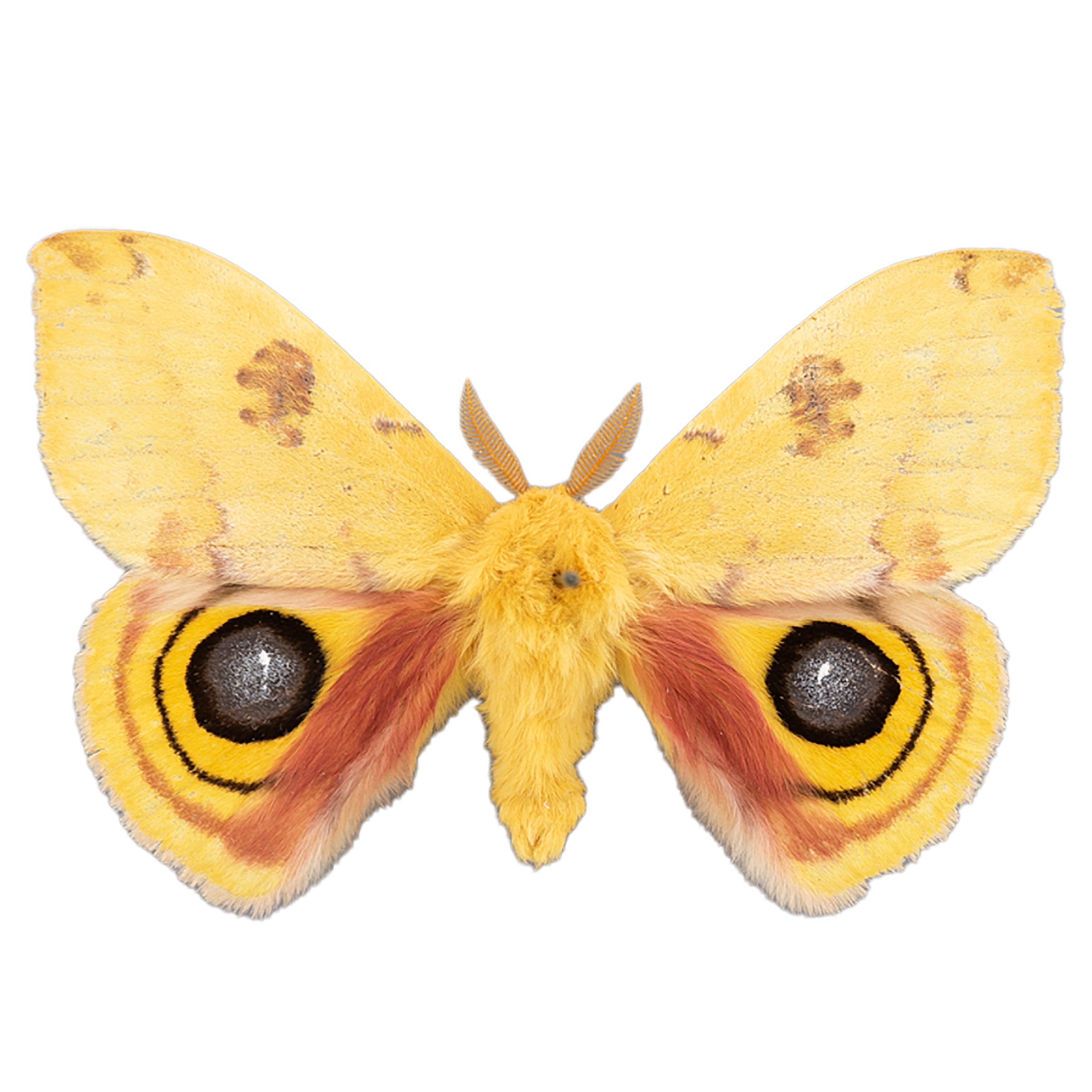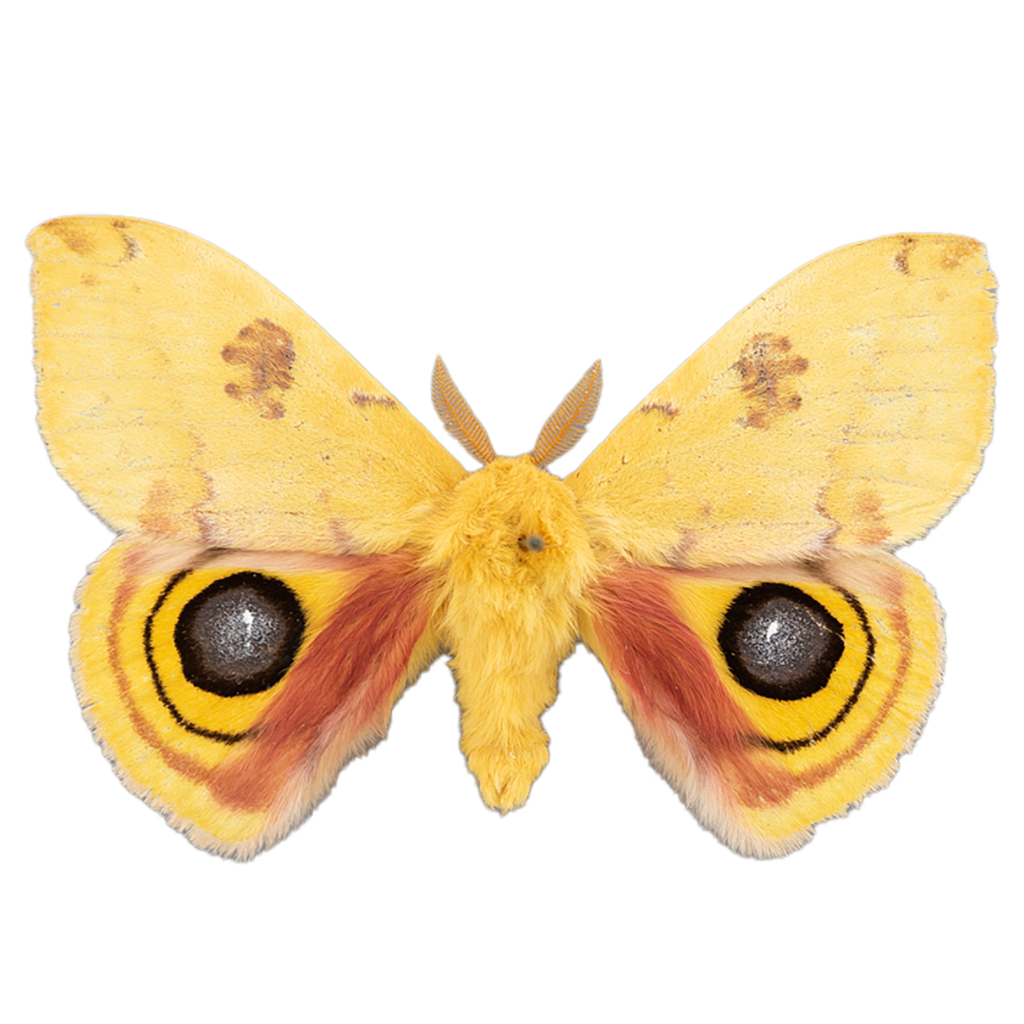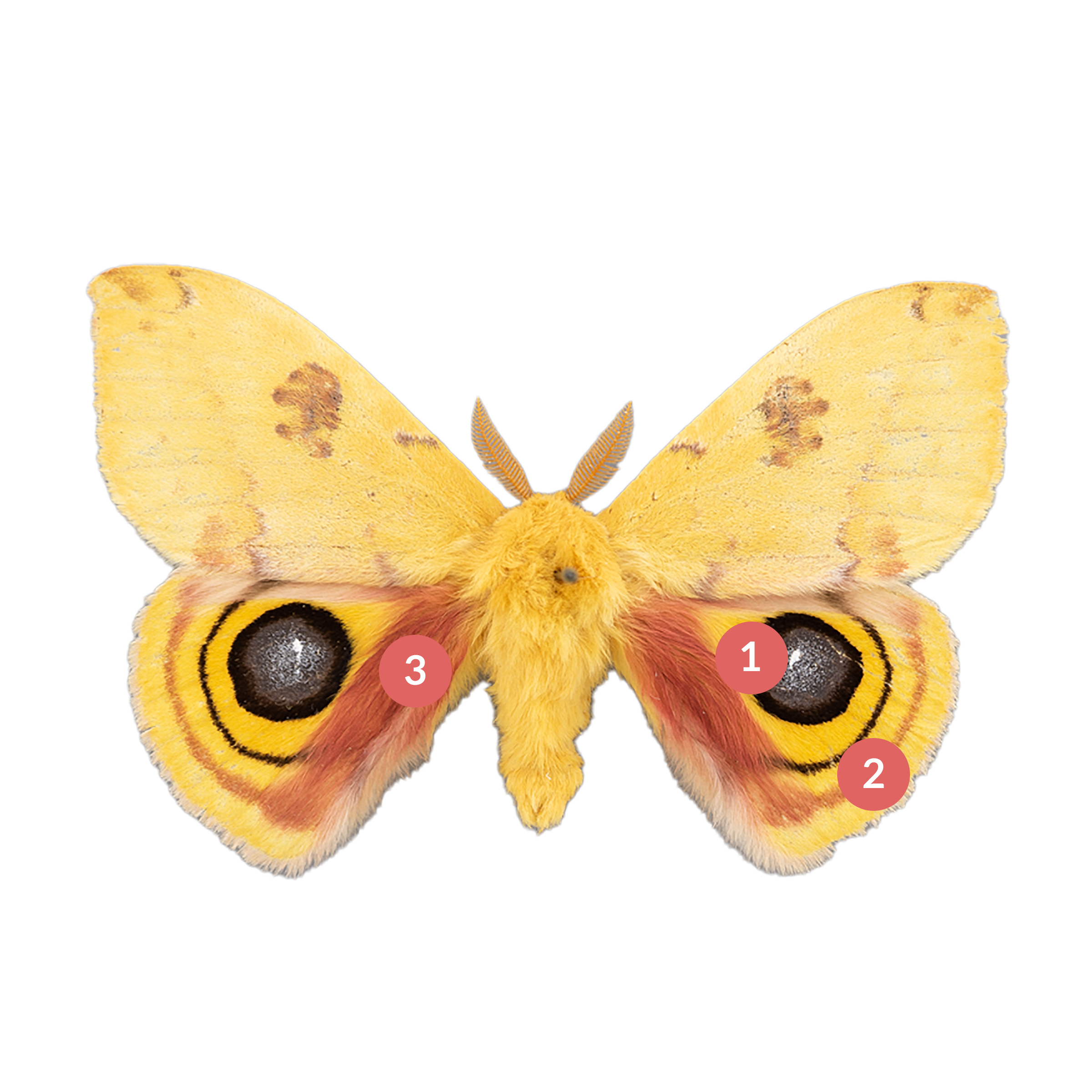About
The Io Moth (Automeris io) is a striking species of moth found throughout much of the eastern United States. Its common name comes from Io, a character in Greek mythology who was transformed into a cow by Zeus. The moth’s bold and colorful wingspan ranges from 2.5 to 3.5 inches and features a varying pattern of yellow, orange, brown, and red.
A fun fact about the Io Moth is that, like many other moth species, it has developed a unique defense mechanism to protect itself from predators. When disturbed, the moth quickly flicks open its wings to reveal the eyespots on its hindwings. The sudden appearance of the eyespots can spook predators, giving the moth a chance to escape.
Overall, the Io Moth is a fascinating species that is easily recognized by its striking colors and distinctive hindwing markings.
Deciduous forests, woodlands, and sometimes urban areas


